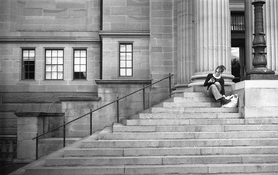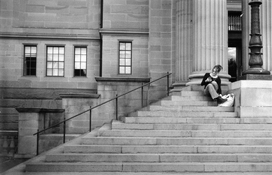snusmumriken
Subscriber
This is HP5 in T-max developer, printed with a Componon-S on 11x14 Ilford MGFB. I think it is pretty grainy.View attachment 346704
For the OP's benefit, I'd say that this very grainy for HP5+ too. It is quite a contrasty print, which will have exaggerated the grain; but I also wonder if T-Max developer is the best choice for this film (unless you like grain)?
On my own 12x16 prints from HP5+ (also on MGFB) I have to study the photograph stupidly close to see the grain at all. I've just looked at several prints to confirm this. I use a metol-only two-bath developer, and am generally printing at G2 ± 1.





 However I agree that we need to know what the temperature variation was in the process I was always under the impression that with modern emulsions such as HP5+ it has to be fairly large to be that noticeable but I am unsure of what the scan represents in terms of an darkroom print nor the answer to the $64,000 question which is: How much is the scanner responsible?
However I agree that we need to know what the temperature variation was in the process I was always under the impression that with modern emulsions such as HP5+ it has to be fairly large to be that noticeable but I am unsure of what the scan represents in terms of an darkroom print nor the answer to the $64,000 question which is: How much is the scanner responsible?





